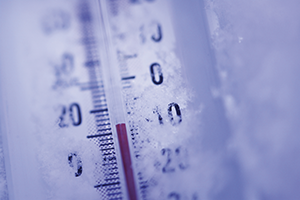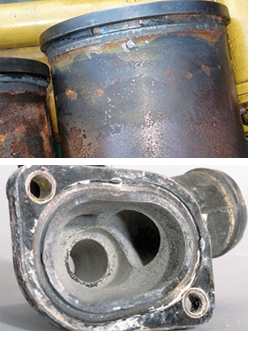Winter Weather Coolant Analysis �
Will You Be Left in the Cold?
 Cold weather issues can be avoided with regular coolant testing and analysis. No matter what the application � mining, construction, oil and gas � downtime means missed deadlines and missed deadlines mean a loss of revenue which can cut drastically into your bottom line. But it doesn�t have to. Cold weather issues can be avoided with regular coolant testing and analysis. No matter what the application � mining, construction, oil and gas � downtime means missed deadlines and missed deadlines mean a loss of revenue which can cut drastically into your bottom line. But it doesn�t have to.
One of the biggest cold weather concerns is maintaining adequate freeze protection. The chart below shows the freeze protection for ethylene and propylene glycol concentrations. It is important to maintain this freeze protection all season. This can be assured by testing the glycol level with a refractometer at every PM.
 Monitoring glycol levels in the field is the proactive first step in ensuring proper cooling system health. But while freeze point must be monitored, boil point is also a concern. Heat is the number one enemy of today�s modern engines. Monitoring glycol levels in the field is the proactive first step in ensuring proper cooling system health. But while freeze point must be monitored, boil point is also a concern. Heat is the number one enemy of today�s modern engines.
Operating temperatures are at their highest in the most recent tier 4 designs with an abundance of heat-producing components under the hood. This places even more demand on the cooling system to transfer heat sufficiently enough to maximize engine efficiency and fluid life.
To sufficiently winterize your fleet against extreme seasonal temperatures, analyze your coolants. Test for contaminants that can cause scale or acid formation, electrolysis, glycol degradation, signs of air leaks, hot spots and localized overheating. Monitor inhibitor levels for proper metal protection and determine if the coolant�s pH is within specifications. Next time you�re left in the cold�you�ll be ready.
Additional Resources:
|